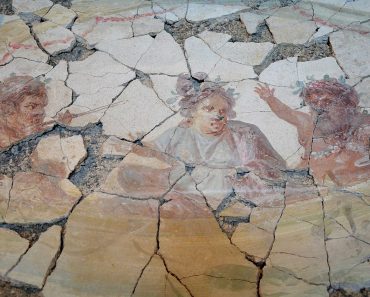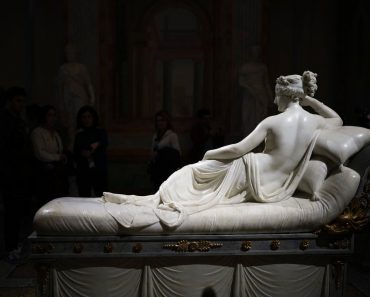If you’ve been to a birthday party, you’ve probably seen it: the cake comes out, the candles are lit, the room sings, and the birthday person makes a wish before blowing them out. It’s a moment we don’t think twice about—but it didn’t start as just a party tradition.
From moonlit offerings in ancient Greece to protective spells in medieval Germany, birthday candles were once used to invoke blessings, ward off misfortune, and represent the delicate balance between life and death.
So, how did a spiritual ritual evolve into a party trick? Here’s how cultures around the world have used fire, food, and celebration to mark the passage of time.
The history of birthday candles
While it’s commonly said that the tradition of birthday candles began in ancient Greece, there’s no direct historical record of candles being placed on cakes to honor the gods. However, some scholars, such as Marie Nicola, a pop culture historian, say the idea likely stems from rituals associated with Artemis, the Greek goddess of the moon.
Archaeological excavations at the Artemision of Ephesus, one of Artemis’s major temples, have uncovered round cakes—known as noûton-gonosupahon—that were used as votive offerings.
Some modern interpretations suggest that worshippers may have lit flames to mimic moonlight and carry prayers skyward during each lunar month to honor Artemis.
“The idea of fire as divine presence is incredibly old and cross-cultural. Indo-European belief systems used fire in household altars and public ceremonies,” says Nicola.
As Greek customs spread, the Romans absorbed many of these practices, introducing round cakes and candlelit offerings into both temple rituals and private celebrations, including birthdays for the elite. As the Roman Empire spread across Gaul, Germania, and Britannia, so did its customs. “Alongside that came the symbolic use of candles in birth rites. And later, Christianity,” says Nicola.
How candles became a birthday tradition
The modern custom of placing candles on birthday cakes is often attributed to the German Kinderfest, a traditional festival celebrating children. According to Margit Grieb, associate professor of German Studies at the University of South Florida, the connection is indirect—but meaningful. “Margit Griebinasmuch as People back then believed that children were especially vulnerable on their birthdays to succumb to evil spirits,” she explains. Lighting candles may have served as a form of spiritual protection.
According to The Oxford Companion to American Food and Drink, the candles were left to burn throughout the day until the evening meal, and their smoke was believed to carry the child’s wishes to heaven.
Early Christians rejected birthdays for being pagan and self-celebratory, says Nicola. While candles, used to honor saints, guide spirits, and mark sacred times, were retained in Christian liturgy, cakes were not. But in the late medieval period, cakes reemerged as festive foods, mostly in elite homes, and in non-liturgical, non-pagan contexts. “In the 1600s, Protestant regions saw a pivot away from saints’ feast days and a growing interest in personal milestones,” says Nicola. “Birthdays, baptism anniversaries, and confirmations became new touchstones for celebration.”
One of the earliest references to the birthday candle tradition comes from German writer Johann Wolfgang von Goethe, who recounts his 52nd birthday in Gotha as a guest of Prince August of Saxe-Gotha-Altenburg in his autobiography, Tage-Und Jahreshefte. He describes a large cake with about 50 flaming candles, leaving no room for candles to represent the coming years, unlike children’s birthday cakes.
This record, written by a Protestant, reinforced how ingrained the ritual had become by the mid-18th century, says Nicola. While Catholics lit candles for saints, Protestants re-situated it. “In many traditions, including early Christian mysticism, [breath] was tied to the soul. Blowing out a candle while making a silent intention carries echoes of votive prayer, only here, it’s domestic, child-centered, and delightfully secular,” she adds.
Before the 18th century, there were relatively few references to birthday cakes and candles, as it was more common at children’s birthdays to put lit candles on the cake, says Grieb. “Even today, a birthday cake with candles is a much more common element of an adult birthday celebration in the U.S. than in Germany.”
The symbolism evolved. Lit candles came to represent inner light and personal growth, according to Nicola. Cakes were topped with lit candles, one for each year of life, plus an additional candle said to represent the “light of life.” Other records describe the surrounding candles as the Light of Life, and the middle candle as the “one to grow on”.
In Switzerland, researchers for The Folk-lore Journal documented the ritual among the Swiss middle class in 1881, although there was no record of prayers or wishes being made.
A birthday cake had lit candles around it, with each candle representing a year of the celebrant’s life. The celebrant blows out the candles before the cake is eaten. Unlike the Germans, the Swiss did not let the candles burn down; instead, they blew them out before they did.
“The Folk Lore Journal is the earliest reference that documents the full birthday candle ritual,” says Nicola, “… which is proof of a cultural tradition that likely originated from Germany.” She adds that the tradition was likely practiced decades before 1881, but it does not appear in the documentation.
How birthday candles became a global tradition
In the 19th century, German immigrants brought the birthday candle tradition with them to the U.S., says Nicola. References to the German candle-on-cake custom began appearing in American publications, with German-language papers like the Philadelphia Demokrat, New Yorker Staats-Zeitung, and Milwaukee Herold, which published Kinderfest announcements, serving as the catalyst.
The early 1800s witnessed a distinct variation of the tradition. Unlike the Germans and Swiss, guests, rather than celebrants, blew out the candles, which had different meanings in different states. However, by 1909, the ritual had reverted to the host blowing out their own candles. It was believed that the wish only came true if the birthday celebrant successfully blew out all the candles in one breath.
Between 1900 and 1920, candles on cakes were the norm among the U.S. and U.K. middle class, says Nicola. By the 1920s, age-appropriate candles, often sold with matching candle holders, had gone mainstream, becoming a universal concept. They were mass-produced and sold by department stores like Sears, Roebuck and Co.
The media also played a significant role in the widespread adoption of the birthday candle tradition. In 1931, Disney’s short film “The Birthday Party,” featuring Mickey Mouse, became a cultural memory embedded in greeting cards, birthday songs, and TV shows.
After World War II, American consumer culture exported the candle-blowing tradition globally, “through tourism, kids’ media, and brands like Hallmark and Betty Crocker,” says Nicola. Postwar Japan had adopted the tradition by the 1950s, while entertainment exports from the United States spread the tradition to other parts of the globe.







